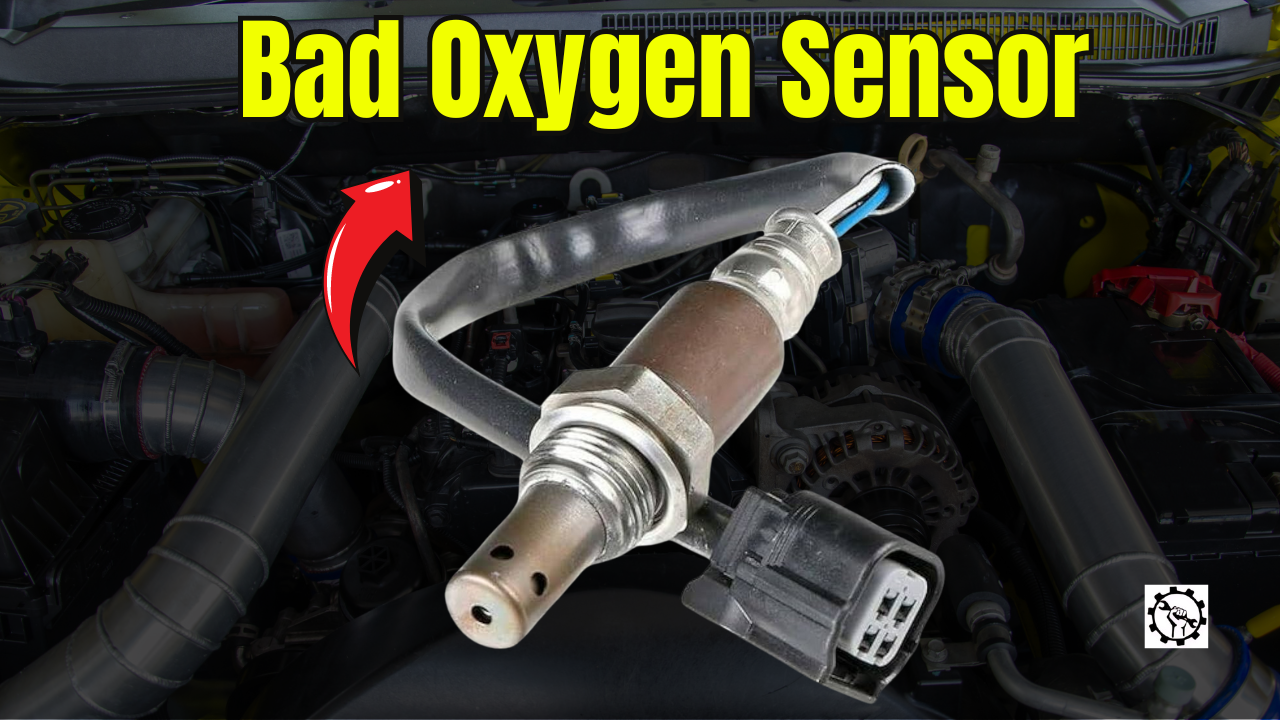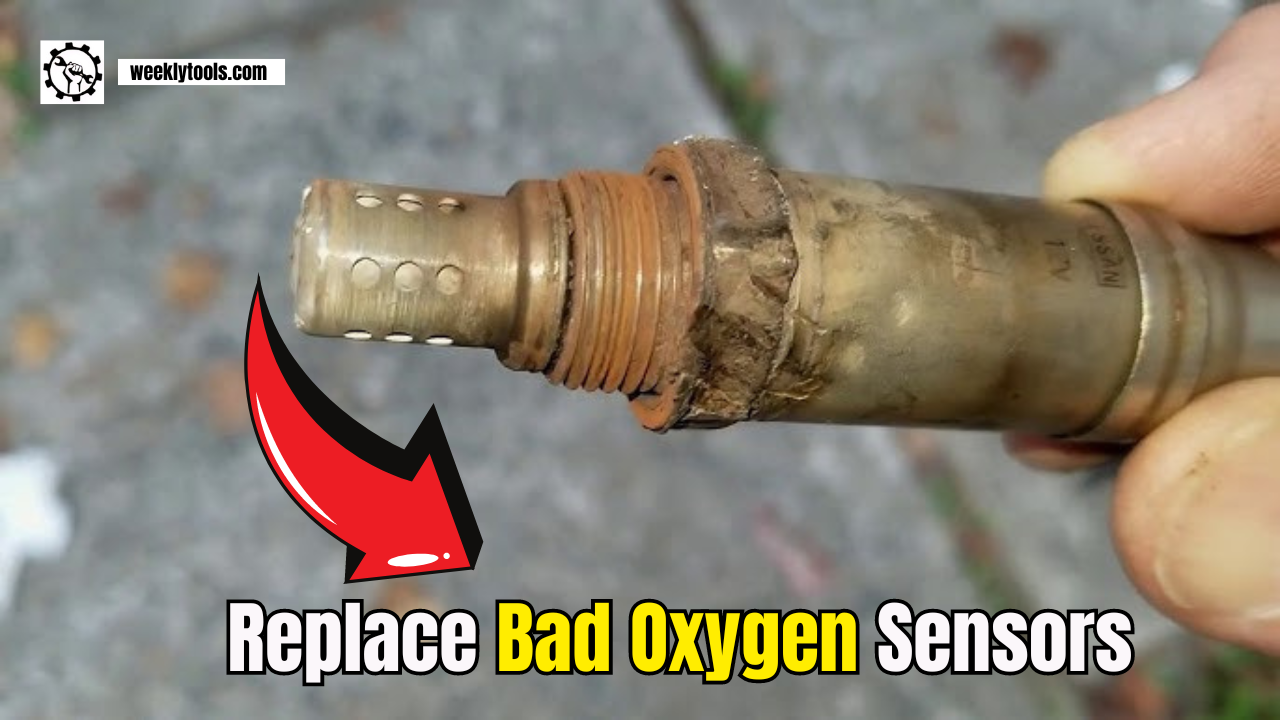Your car’s mileage becomes intolerably poor? Or your check engine light stays longer than usual? These become concerning when the issues won’t go away, or, get even worse over time. Despite all other possibilities, there could be Symptoms of a Bad Oxygen Sensor that appear on your car.
Oxygen sensors, though small and often overlooked, play a critical role in your vehicle’s performance and environmental impact. Let’s learn further about what oxygen sensors do, the Symptoms of a Bad Oxygen Sensor on your car, and what you should do about it.
What Is an Oxygen Sensor and How Does It Work?
Before we get into the symptoms of a bad oxygen sensor, let’s first understand its role in your vehicle. Oxygen sensors, commonly referred to as O2 sensors, are responsible for measuring the amount of oxygen in your vehicle’s exhaust gases. These sensors provide critical information to your car’s engine control module (ECM), which then adjusts the air-fuel mixture for optimal combustion.
To put it simply, oxygen sensors ensure that your engine runs efficiently, minimizing harmful emissions and maximizing fuel economy. Most vehicles have at least two oxygen sensors: one located upstream, before the catalytic converter, and another downstream, after the catalytic converter. The upstream sensor monitors the air-fuel ratio, while the downstream sensor assesses the efficiency of the catalytic converter.

Symptoms of a Failing Oxygen Sensor
A malfunctioning oxygen sensor can manifest in various ways, and identifying the signs early can save you from more significant issues down the road. Here are the most common symptoms to watch out for:
Check Engine Light Illuminates
One of the most apparent signs of a bad oxygen sensor is the illumination of the check engine light on your dashboard. While this light can signal many different issues, a faulty oxygen sensor is a frequent cause.
If your vehicle is high-mileage, it’s especially likely that the oxygen sensor could be the issue. However, it’s crucial to get a professional diagnosis rather than jumping to conclusions, as other components could also be contributing to the problem.
Decreased Fuel Efficiency
If you’ve noticed that you’re visiting the gas station more often than usual, your oxygen sensor might be to blame. A failing sensor can cause your engine to run too rich (excess fuel) or too lean (insufficient fuel), leading to poor fuel economy. A sudden drop in gas mileage is a clear sign that your oxygen sensor might not be accurately measuring the air-fuel mixture.
Rough Idling and Poor Engine Performance
A malfunctioning oxygen sensor can disrupt the delicate balance of the air-fuel mixture, leading to rough idling, engine misfires, and poor acceleration. If your engine feels like it’s struggling or “stuttering,” especially at low speeds or while idling, it could be due to an inaccurate oxygen sensor.
Unusual Exhaust Odor
Another sign of a failing oxygen sensor is a noticeable change in the smell of your vehicle’s exhaust. If the sensor isn’t doing its job, your engine may run rich, resulting in excess unburned fuel. This can lead to a strong, unpleasant odor, often described as a sulfur or “rotten egg” smell, emanating from the exhaust.
Black Smoke from the Exhaust
When the air-fuel mixture is imbalanced due to a faulty oxygen sensor, incomplete combustion can occur, resulting in black smoke being expelled from the exhaust. This not only indicates poor fuel efficiency but also suggests that harmful emissions are being released into the environment.
Failed Emissions Test
Oxygen sensors are integral to your vehicle’s emissions control system. A faulty sensor can cause your vehicle to produce higher levels of harmful emissions, leading to a failed emissions test. If your vehicle doesn’t pass the test, it’s essential to have the oxygen sensor checked and replaced if necessary.
Engine Stalling or Misfiring
In more severe cases, a failing oxygen sensor can lead to engine stalling or frequent misfires. This is particularly dangerous when driving at higher speeds or when trying to accelerate. If your engine stalls or you experience misfires, it’s important to have your vehicle inspected immediately.
Increased Engine RPM at Idle
A faulty oxygen sensor can cause your engine to run at a higher RPM (revolutions per minute) than usual when idling. This is because the sensor’s inaccurate readings can lead to an improper air-fuel mixture, forcing the engine to work harder even when it’s not under load
Catalytic Converter Damage
Perhaps the most severe consequence of ignoring a bad oxygen sensor is potential damage to your catalytic converter. The catalytic converter is responsible for converting harmful gases from your engine into less harmful emissions.
If the oxygen sensor fails to regulate the air-fuel mixture correctly, it can cause an excessive amount of unburned fuel to enter the catalytic converter, leading to overheating and eventual failure. Replacing a catalytic converter can be costly, so it’s better to address the oxygen sensor issue before it escalates.

What Causes an Oxygen Sensor to Fail?
Oxygen sensors are exposed to extreme conditions, including high temperatures and harsh exhaust gases, which can cause them to deteriorate over time. Common causes of oxygen sensor failure include:
- Sensor Age: Like all components, oxygen sensors have a finite lifespan, typically around 50,000 to 100,000 miles.
- Contaminants: Oil or coolant leaks can contaminate the sensor, affecting its performance.
- Fuel Additives: Overuse of certain fuel additives can damage the sensor.
- Carbon Buildup: Soot and carbon deposits can accumulate on the sensor, reducing its accuracy.
Should You Replace All Oxygen Sensors at Once?
If one oxygen sensor fails, it’s not always necessary to replace all of them simultaneously. However, since oxygen sensors have similar lifespans, it’s often recommended to replace them together, especially if the others are close to the end of their service life. This can save you from future repair costs and reduce the inconvenience of multiple service visits.

How Long Do Oxygen Sensors Last?
The lifespan of an oxygen sensor varies depending on the vehicle and driving conditions. Generally, older vehicles with non-heated sensors may need replacements every 30,000 to 50,000 miles, while newer vehicles with heated sensors can last up to 100,000 miles or more. Regular maintenance, such as timely oil changes and using high-quality fuel, can help extend the life of your oxygen sensors.
Can You Drive with a Bad Oxygen Sensor?
While it’s possible to drive with a bad oxygen sensor, it’s not advisable. Doing so can lead to poor fuel economy, increased emissions, and potential damage to other engine components, including the catalytic converter. It’s best to address the issue as soon as possible to avoid more elaborate, heavier problems down the line.
Conclusion
Oxygen sensors are a pivotal component despite their small size. By understanding the signs of a bad oxygen sensor and taking prompt action when issues arise, you can ensure that your car runs efficiently and stays environmentally friendly.
Regular maintenance and timely replacement of faulty components like oxygen sensors are key to keeping your vehicle in optimal condition and avoiding costly repairs.
If you notice any of the symptoms discussed in this article, it’s time to have your vehicle inspected by a professional. A quick fix now could save you from more significant headaches in the future.

As a mechanical engineer, it’s easy for David to explain the functionality of the tool. David test most of the tools before writing a review. its help him to learn something new and suggest the best product for you.






